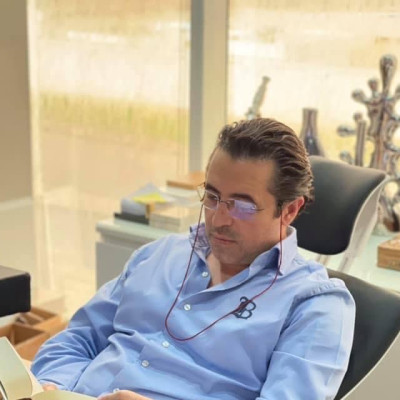5 key facts about this project
## Project Overview
Located within a culturally rich context, the villa integrates traditional Emirati aesthetics with contemporary design principles to establish a sustainable and luxurious living environment. The intent is to create a residence that emphasizes comfort and innovation while ensuring careful consideration of environmental impact. Architectural plans, elevations, sections, and 3D perspectives illustrate the commitment to sustainability and elegant design throughout the project.
### Spatial Configuration and User Experience
The villa is designed with an open and interconnected layout that facilitates natural light flow and ventilation. Strategic placement of large glass panels fosters a fluid relationship between indoor and outdoor spaces, enhancing the overall living experience. The multi-level configuration includes a basement, ground floor, first floor, and a penthouse, each designated for specific functions yet unified in design. Landscaped gardens and relaxation zones are incorporated to promote tranquility and encourage outdoor engagement.
### Material Selection and Sustainability
Material choices reflect an emphasis on durability, aesthetics, and sustainability. Concrete is employed for structural integrity, while stone provides not only visual appeal but also insulation. Warmth is introduced through wooden finishes, complemented by transparent glass that connects the interior with the environment. Aluminum is utilized in framing and decorative elements, ensuring a balance of modernity and longevity. The design incorporates solar panels and other renewable energy technologies to minimize the carbon footprint and reduce electricity consumption, showcasing a holistic approach to sustainable living.
Unique features include flexible living spaces adaptable to various functions, enhanced by the integration of smart home technologies for resource management. Artistic elements, such as ornately designed ceilings and thoughtfully chosen fixtures, enrich the aesthetic quality of the residence, merging luxury with practical living.


 Mazen Kwaia
Mazen Kwaia 



















